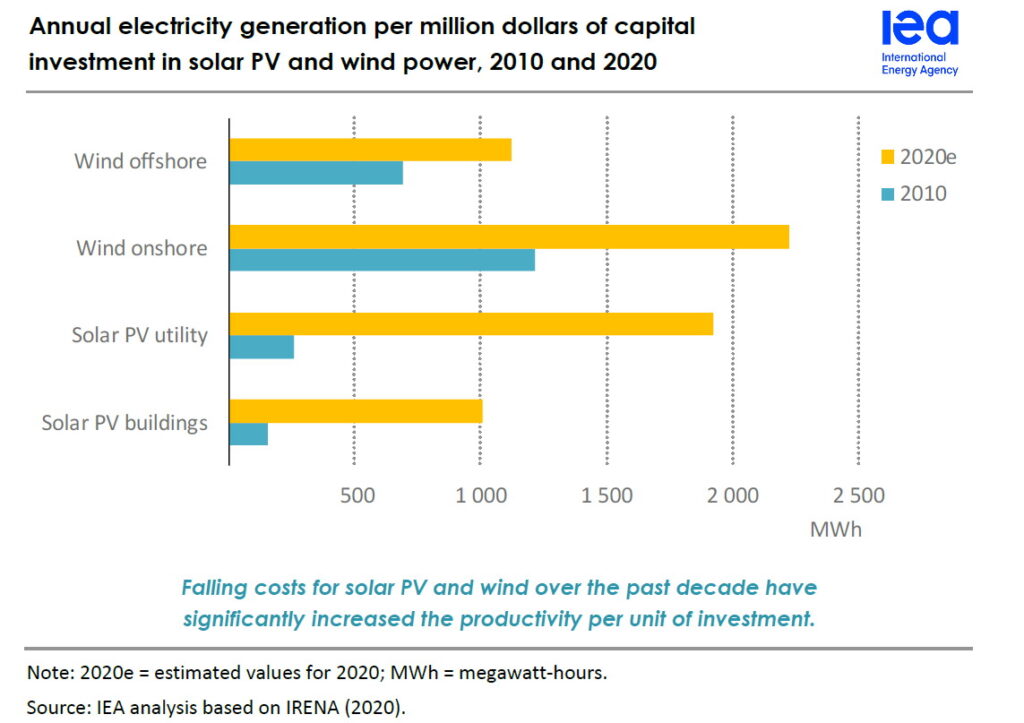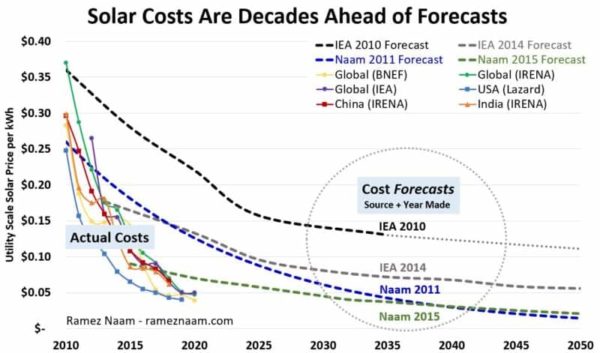The year 2010 was not that long ago. The US housing bubble and subsequent global economic collapse of 2008 resulted in governments pouring billions into the projects to get the economy moving. A notable amount went in wind and solar. In the United States, then President Obama announced $100 Billion “Green Stimulus” as part of a larger $900 Billion total stimulus package including:
“…Renewable energy loans: ($10 billion Senate, $8 billion House) – These work like outright grants for various renewable energy and transmission projects in the early stages of development. They could include wave power, geothermal, offshore wind or innovative solar projects, as well as more traditional renewable energy projects.
Renewable energy and conservation bonds: $1.5 billion – This lets local and state governments raise money for renewable energy and conservation projects by issuing bonds backed by the federal government.
Renewable energy manufacturing: $1.4 billion – In the Senate version only, this would let companies that make renewable energy components – like wind turbines or solar panels, receive a tax credit of 30% of their new investments in plants or machinery.
Small-scale renewable tax credits: $1 billion – Currently, if you buy a small windmill for your backyard, a solar hot water heater or a geothermal heating system you can write off 30% of the cost on your federal tax bill, capped at $2,000 for the heating systems and $4,000 for the wind turbine. This bill removes those caps, although the 30% limit remains…” SOURCE
The US was not alone as countries all around the globe put an emphasis on “green” to help restore their economic health.
Market forces like the production curve (the notion that producing more units, lowers the cost per unit as overhead costs get divided by more products and efficiencies are gained with scale and experience) drive costs down, often dramatically. In the 1980’s Commodore started selling the famous C64 home computer below cost because their founder and CEO Jack Tramiel understood he needed to get massive sales to drive costs down and make massive profits. This unseen force is true for computers, is true for oil, is true for wind and solar.
As 2020 draws to a close it is useful to see how those investments which kicked green-tech up a notch actually effected prices.
The energy industries non-partisan honest broker of information, the International Energy Agency, just released a “special report” on sustainable recovery to the COVID-19 caused economic crisis of 2020. In that report, the IEA has a very nice graphic that explains how much more efficient solar and wind power are today compared to 10 years ago:
In this we see that Solar is a real standout at 700% improvement in output per dollar today in 2020 compared to 2010. Wind powers 60% gain in just 10 years in nothing to scoff at.
Take a look at this chart explaining the cost of solar has dropped radically below the costs estimated by even the best informed agencies:
It is clear that government investments of the late 2000’s combined with private sector innovation increased the relentless pace of change which benefits us all.





2 Comments
How Home Solar Can Solve Power Grid Problems – Partisan Issues · March 5, 2021 at 6:09 pm
[…] storage at your house, you can not only keep your family safe but you can help the grid. Homes with solar panels not only lessen the load on the grid, but also SELL their surplus electricity back to the grid. […]
What Should I Take Into Account To Choose The Right Inverter? – Partisan Issues · February 22, 2022 at 7:55 pm
[…] choosing the solar inverter for the photovoltaic installation that you are going to carry out, it is essential that you take into account its […]